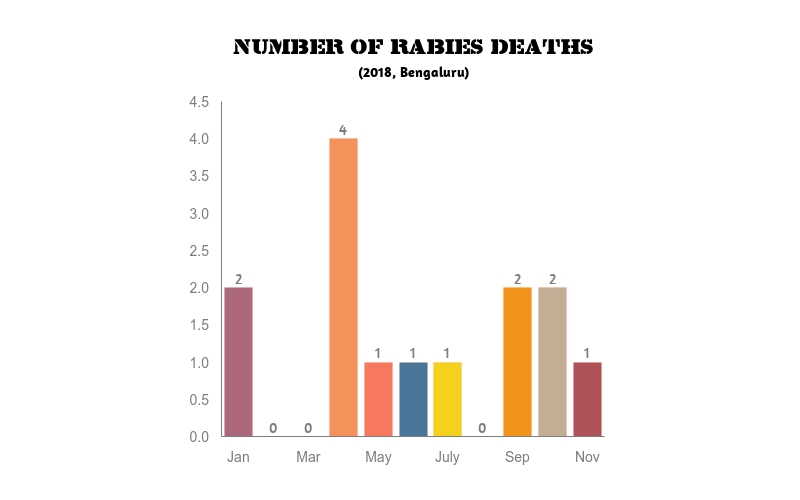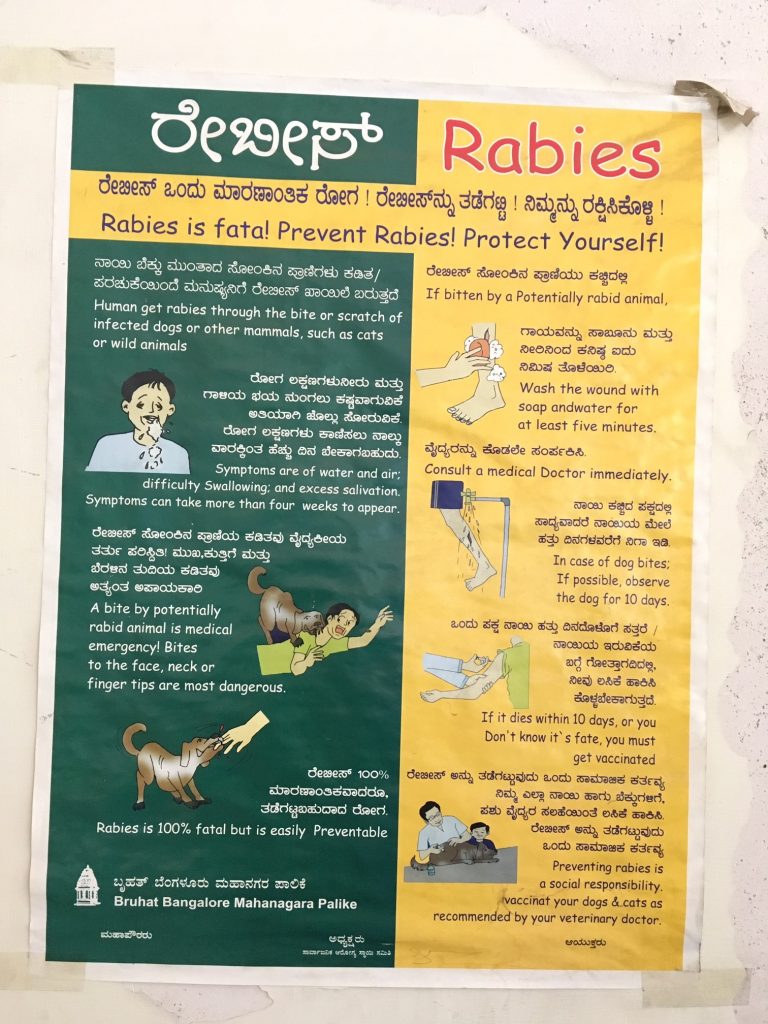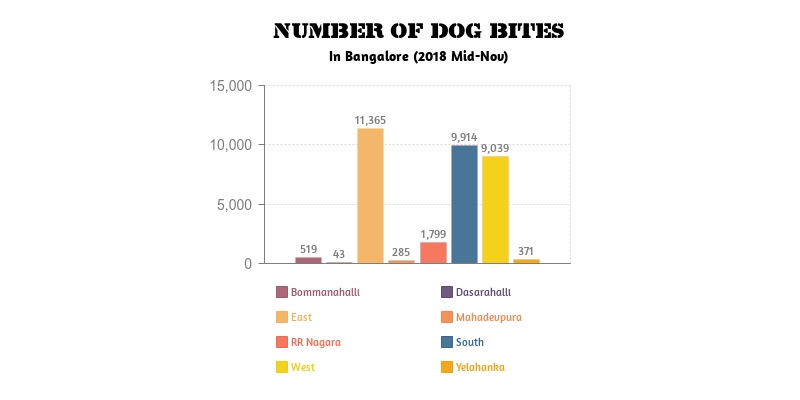14 deaths due to rabies reported this year
By Ayanti Bera
Bengaluru, Nov. 17, 2018.
According to the National Health Profile 2018, Karnataka ranks second in rabies death all over India, after West Bengal. In 2018 so far, 14 cases and subsequent deaths from rabies have been recorded at the Epidemic Hospital in Bangalore, the only isolation hospital in the city.
[media-credit id=32 align=”aligncenter” width=”800″] [/media-credit]
[/media-credit]
Mr. Ansar Ahmad, District Surgeon and Medical Superintendent of Epidemic Hospital says “When it comes to rabies, prevention is the only option. To date rabies has a 100 percent fatality rate, as it has no cure.”This high number of rabies cases can be directly related to the stray animal’s problem in the city. According to the census of 2012, the number of stray dogs in the city is 1.83 lakhs and the number of pet dogs is 1.43 lakhs. No census has hereby been carried out to estimate current the stray population.
According to the data from the Animal Husbandry Department of Bhruhat Bengaluru Mahanagar Palike (BBMP), the corporation’s Animal Birth Control (ABC) programme has operated only 27,537 dogs this year and vaccinated 39,344. The unchecked breeding of dogs enhances the risk of transmission of the rabies virus, a virus belonging to the Rhabdoviridae family.
This deadly virus spreads to people from the saliva of infected animals. Dr. Ahmed says that through saliva the rabies virus can enter microscopic wounds on a person. Once the virus enters the body, it goes directly to the Peripheral Nervous System (PNS) and migrates to the brain resulting in encephalitis or inflammation of the brain caused by an infection in the brain. This inflammation of the brain leads to coma and then eminent death.
The most common form of rabies is characterised by convulsions, hallucinations, aggression and confusion, difficulty in breathing, hyper salivation or production of a lot of saliva, and most importantly hydrophobia and photophobia, fear of water and light.
Since there is no treatment available, patients who get admitted to the ED hospital are given sedatives to relax until they eventually die. The symptoms occur after three to eight weeks of exposure to the virus – and once they appear, it is too late to save the patient. Any rabies patient that gets admitted to the ED hospital hardly survives for 24-48 hours.

According to the records of Epidemic Hospital, 2017 also saw a similar number of deaths. Between January to December the number of Rabies death is 15, with 5 being the highest number of deaths recorded in February of that year.
Rabies is usually prevalent in continents that have a large stray dog population, such as Asia and Africa.
According to the Public Health Information Epidemiological Cell (PHIEC) of the BBMP, 33,335 people have been bitten by dogs this year so far. The majority of them have received an anti-rabies injection. Dr. Venkatesh T., Project Coordinator of Communicable and Non-Communicable Diseases at PHIEC said that free vaccination is given to whoever registers a dog bite.
[media-credit id=32 align=”aligncenter” width=”800″] [/media-credit]
[/media-credit]
The only way to protect oneself from rabies is to give proper immunisation. Dr Ahmed says “Whoever handles a dog, cat or any wild animal should always get immunized, and should also immunise the animal”.




Nice site you got here, very awesome and good content. Thanks!